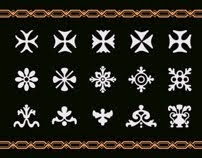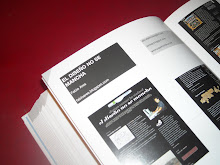Diseño caligráfico iraní
Una de las cualidades que hace único al diseño gráfico iraní es su tipografía. El país tiene una historia rica de artes visuales, y por otra parte la parte, lo mejor de esta herencia consiste en la caligrafía. A través de tiempos la caligrafía evolucionó e influenció a otras formas de arte. Su incorporación a la arquitectura islámica es un ejemplo fino de esta unión. En épocas recientes estos tesoros de la belleza y de la armonía han inspirado a pintores, escultores, y particularmente, a diseñadores gráficos. En comparación a Europa y Norteamérica, la caligrafía es la forma más popular y más practicada de arte en Irán y en la mayoría de los otros países alrededor de esta área. Se puede ver por lo menos de una pieza caligráfica del colgada en las paredes de la mayoría de las casas iraníes. La lengua nacional de Irán se llama Farsi o Parsi. El Farsi y el Árabe poseen un alfabeto similar, pero el Farsi tiene cuatro letras adicionales.
En este extenso trabajo podemos observar características de esta escritura, y la obra de varios diseñadores y artistas. Pero cabe destacar a Reza Abedini , uno de los diseñadores contemporáneos que ha explorado y ha ampliado las posibilidades tipograficas del Farsi. En muchos de sus trabajos, Abedini manipula palabras y letras individuales para alcanzar un estilo tipográfico único. Aunque Abedini utiliza tipografías modernas, él intenta "restablecer las cualidades poéticas de la escritura persa en sus carteles".

One of the qualities that makes current Iranian graphic design unique is its typography. The country has a rich history of visual arts and moreover the better part of this heritage consists of calligraphy. Throughout the times calligraphy has been inventing and reinventing itself and has influenced other forms of art. The incorporation of calligraphy into Islamic architecture is a fine example of this union. In recent times these treasures of beauty and harmony have inspired painters, sculptors, and in particular: graphic designers.
In comparison to Europe and North America calligraphy is a far more popular and practiced form of art in Iran and in most other countries around this area. You can spot at least one piece of calligraphy hung on the walls of most Iranian households.
The national language of Iran is called Farsi or Parsi. Farsi and Arabic use a similar alphabet but Farsi has four extra letters.
Reza Abedini is one of the contemporary designers who has explored and expanded the possibilities of Farsi typography. In many of his works Abedini breaks up the baseline and manipulates individual words and letters to achieve his unique typographic style. Although Abedini uses modern typefaces, he tries “to revive the poetic qualities of Persian calligraphy in his posters”, as he puts it.
Excelent post. Very interesting job.
















No hay comentarios.:
Publicar un comentario